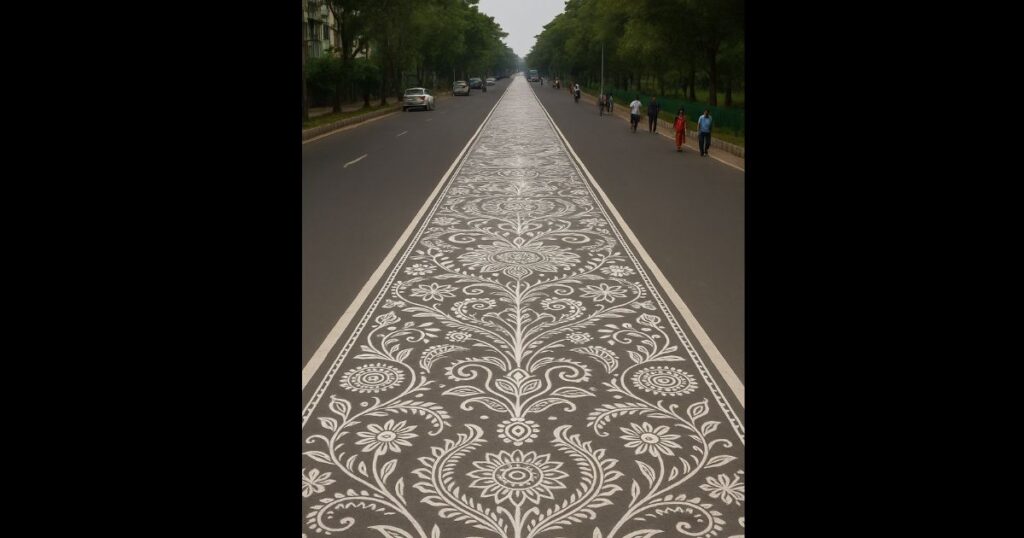On a stretch of road near Newtown, a canvas unlike any other has emerged: a 500-foot-long alpana, the traditional floor art of Bengal, rendered for the first time through artificial intelligence. Painted days before the start of Durga Puja, the sprawling street mural fuses centuries-old motifs with digital design, marking a striking moment where heritage meets technology.
A Familiar Ritual, Scaled to the Extraordinary
For generations, women in Bengal have drawn alpanas on courtyards and thresholds, tracing floral vines, geometric spirals, and cosmic symbols with rice paste. These ephemeral artworks, once created by hand in quiet household rituals, have now spilled dramatically onto the asphalt.
What makes this year’s design remarkable is not only its unprecedented length but its origin. The patterns were generated using AI software, trained on traditional motifs, before being interpreted and painted by a team of local artists. The result: a visual narrative that feels both timeless and futuristic.
Collaboration Across Worlds
The project was conceived in partnership with a global electronics brand, which provided the AI tools to generate the intricate outlines. Artists on the ground then reimagined them in brushstrokes and color, creating what organizers described as a “dialogue between code and craft.”
“AI suggested the possibilities,” said one of the artists, “but the human hand gave it soul.”
The artwork has quickly become a gathering point for visitors, with families strolling along the painted road and photographing the bold white patterns against the grey of the city street.
Art as Celebration, and Experiment
Durga Puja in Kolkata has long been a showcase of spectacle, where art, devotion, and urban life converge. Pandals replicate temples and palaces, idols push the limits of sculpture, and streets glow with elaborate lighting installations. The alpana adds a new layer to this cultural landscape — a statement about how traditions can evolve without being eclipsed.
Cultural historians note that while some worry about technology diluting heritage, projects like this suggest another path: using AI not as a replacement, but as a collaborator in cultural preservation.
“This experiment,” said a professor of cultural studies at Jadavpur University, “is not about novelty alone. It asks how a living tradition can be scaled, reimagined, and made visible to a new generation without losing its essence.”


